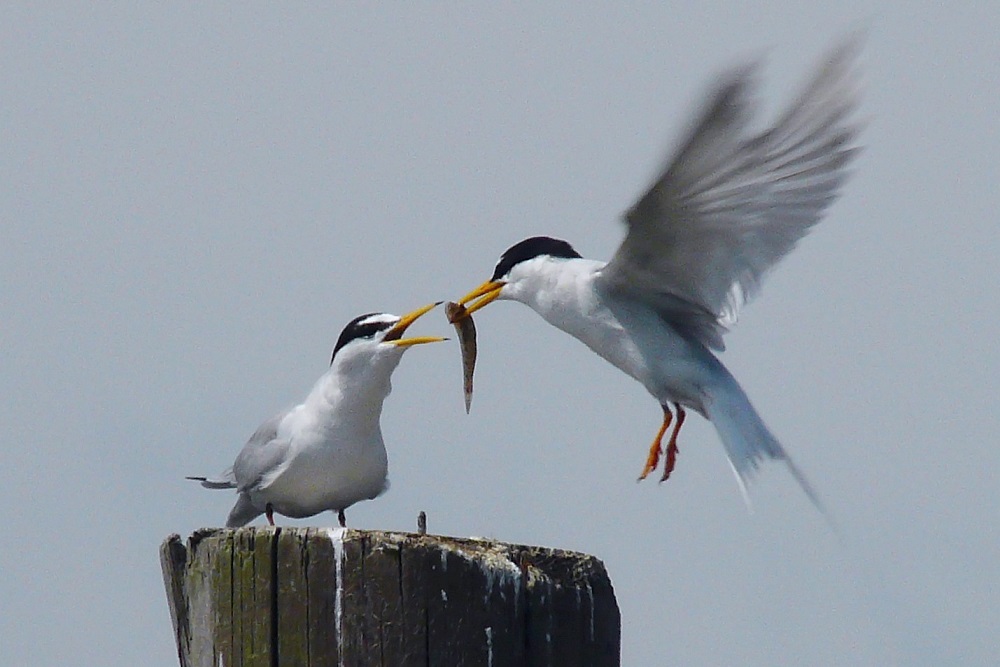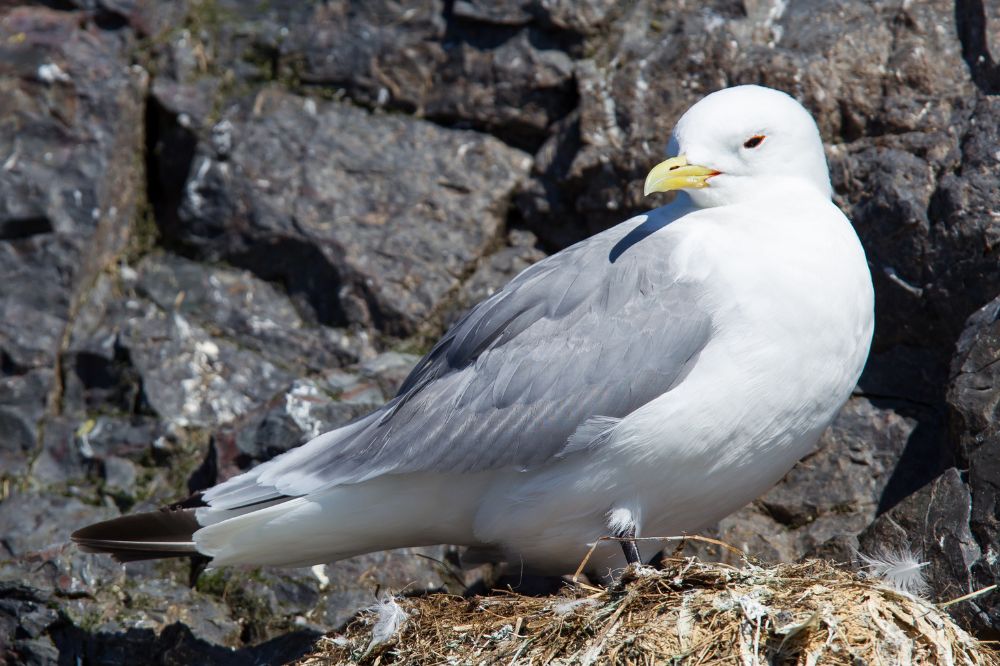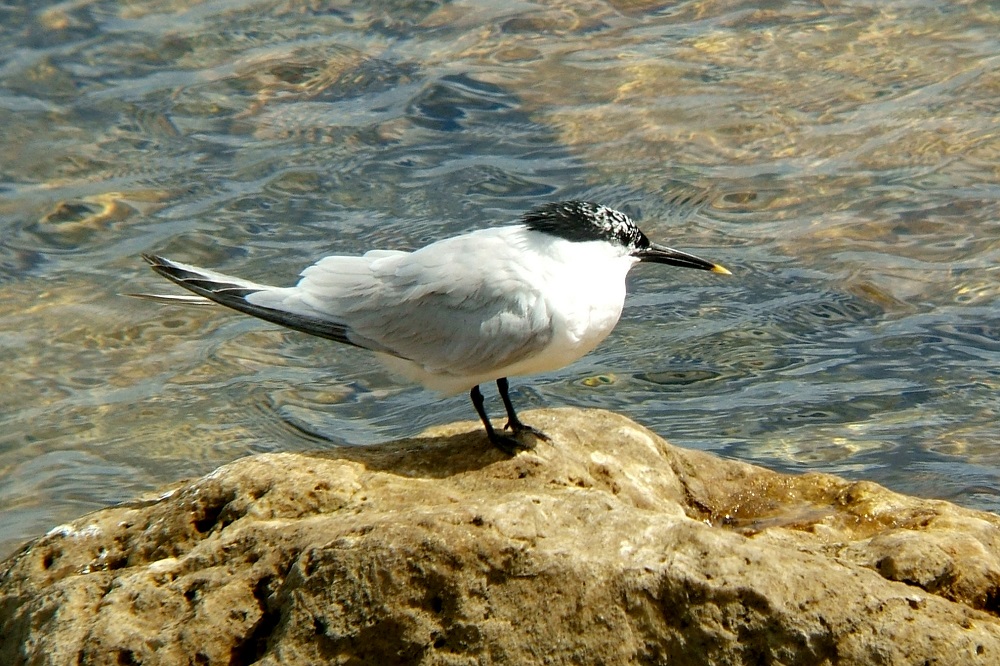Half of Welsh seabird species increase since last census

More than half of seabird species that breed in Wales have increased over the last twenty years, according to a census published today.
Seabirds Count, released as a book by wildlife publishers Lynx Edicions, is the most comprehensive seabird census produced to date.
It provides population estimates for the 25 regularly breeding species of Britain, Ireland, Isle of Man and the Channel Islands.
The survey took place between 2015 and 2021 and was led by the Joint Nature Conservation Committee (JNCC) with over 20 steering group partners.
Key partners who spearheaded the work to collect and publish the findings are Birdwatch Ireland, JNCC, the National Parks and Wildlife Service (Ireland), and the RSPB.
The census results show that 11 of the 21 seabird species which regularly breed in Wales have increased since Seabird 2000, the last census which was published in 2004 and covered 1998-2002.
Four of the other seabird species have up to date breeding population estimates but due to survey method changes and improvements these cannot be confidently compared with previous estimates.
The remaining six species have however decreased.
Whilst the main drivers for declining populations vary between species and even location, there are some common themes.
Predation is a common problem: eggs, chicks and adults can be eaten by native and invasive predators.
Climate change is another factor as adverse weather conditions are causing nest sites to be swept away and making foraging conditions more difficult.
Increased water temperatures may reduce the availability of important food such as sandeels which leads to seabird parents not finding enough food.
Black-legged Kittiwake
Because of recent declines both nationally and globally, Black-legged Kittiwakes are a Red-listed Bird of Conservation Concern in the UK and classed as Vulnerable by the International Union for Conservation of Nature.
In Wales, the species has declined by 34%, whilst the entire Britain and Ireland population is the lowest recorded by any of the previous censuses.

The species is one of our most well-studied seabirds and the main causes of the decline are likely to be the reduction of sandeel availability due to climate change, with extreme weather events also potentially important.
There is a suggestion that unlike Kittiwakes in the North Sea, Kittiwakes foraging in the Celtic Sea have a more varied diet and so less likely to be impacted by sandeel abundance change.
However, more research is needed to understand this and its links to climate change and anthropogenic pressure.
European Shag
European Shag is already Red-Listed in the UK’s Birds of Conservation Concern due to long-term declines, and the recent census results suggest a continuation in that trend with the Welsh population having decreased by 29%.

European Shags are particularly impacted by severe weather events, in part driven by climate change, as well as prey availability.
Terns
Of the five regularly breeding tern species in Britain and Ireland, four have increased during the last survey. In Wales, these slender seabirds almost exclusively nest in coastal habitats on marine islands or beaches.
This makes them extremely vulnerable to predation, disturbance from humans and flooding of nest sites.
Arctic Tern has done particularly well in Wales, having increased by 133%, despite a 35% decline in the rest of Britain and Ireland.
Site protection and management benefit Arctic Terns and the largest colony of terns can be found in the Skerries, Isle of Anglesey, which forms part of the Morwenoliaid Ynys Môn/Anglesey Terns . This population has increased by 151%
Common Tern and Sandwich Tern have also increased, although by a smaller amount (21% and 15% respectively).

In Wales, Common Terns are confined to Flintshire and Anglesey with numbers increasing with every national census.
The tern census was undertaken in 2018, which wasn’t the best year for Sandwich Tern in Wales, and the population was higher at the end of the census period in 2021.
Britain and Ireland’s Little Tern breeding population is now at its lowest at any point in the history of the census, however the population in Wales has increased by 129% since the last census.
The second largest colony of Little Terns in Britain and Ireland can be found at Gronant. Alongside successful conservation efforts at these sites, their continued growth also suggests that the adults have high survival rates.
Daisy Burnell, Senior Marine Ornithologist & Seabirds Count Coordinator, JNCC said: “It is heartening to see the positive and stable trends across a good number of the seabird species breeding in Wales. There is clearly resilience in these populations that we need to monitor and study to help inform future seabird recovery and conservation more widely.
“We are incredibly grateful for the hard work and dedication that our partners in Wales have shown over the course of the project, by providing key data. From these results we have been able understand the global importance of Wales for some breeding seabirds, in particular Manx Shearwater where almost half the world population breeds.”
Since the census was completed, Britain and Ireland have experienced a severe outbreak of Highly Pathogenic Avian Influenza (HPAI) in their seabird colonies.
At the time of the census, Wales held 10% of Britain and Ireland’s Gannet population. Grassholm, situated off the Pembrokeshire coast, was home to over 30,000 Gannets, however a localised census conducted on Grassholm in summer 2023 showed that the population of Gannets on the island has halved due to HPAI.

High mortality has also been seen in other seabird species such as terns, but the overall impact on populations is yet to be estimated and we await analysis by the RSPB of new data from 2023.
The results of the census come at a critical time, creating a baseline for conservationists to better understand the impacts of HPAI going forward, as well as being able to measure the effectiveness of conservation actions in our seabird colonies.
Julian Hughes, Head of Species at RSPB Cymru said: “Seabirds Count shows the importance of the seas around Wales for nature, but the wider declines across Britain and Ireland should ring alarm bells for all those with responsibilities for the seas and our climate.
“Seabird populations have been battered by the ways we use the coasts and sea, from the introduction of predators to islands to the increasing effects of climate change. The success stories from this survey show that conservation efforts do work, and we need more such efforts to increase the resilience of our seabirds to changes ahead.
“Many seabirds live for decades, so it is up to us to ensure that chicks hatching this year are as successful as those of their parents’ generation.”
Britain and Ireland hold most of the world’s breeding population of Norther Gannet, Great Skua and Manx Shearwater.
Wales is particularly important for Manx Shearwater as it holds more than half of Britain and Ireland’s breeding population; this means almost half of the world population of Manx Shearwaters breed in Wales.
Support our Nation today
For the price of a cup of coffee a month you can help us create an independent, not-for-profit, national news service for the people of Wales, by the people of Wales.







Or did ONS overestimate the returns? Perhaps some of the seabirds don’t speak English as a first language and didn’t understand the questions. Oh if only Suella Braverman were here to challenge any statistics she does not like. They were probably “foreign” seabirds anyway who followed the “illegal immigrant” boats over. We should opt out of the ECSR and package them off to Rwanda where they will be perfectly safe, honest!